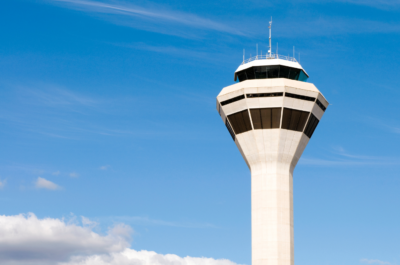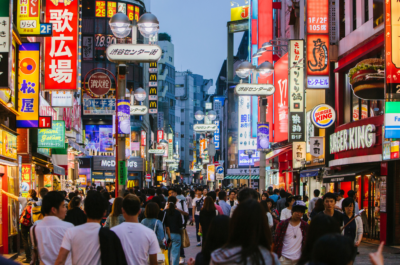Leading Chinese global wholesaler DidaTravel comments on the trends regarding travel disribution.
As the year comes to a close, we have interviewed the top three executives at DidaTravel to ask them about their views on how the travel distribution landscape is changing and what to look out for in 2022.
Rikin Wu, Chief Executive Officer
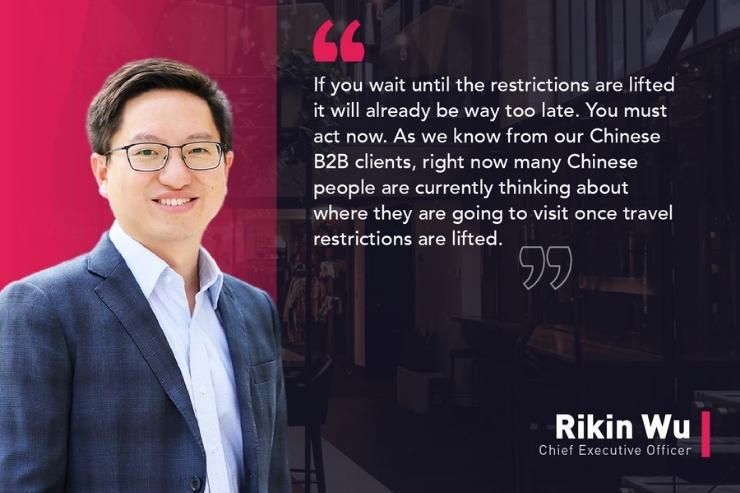
Preparing for the recovery of China outbound tourism
When will Chinese citizens finally be allowed to travel internationally?
- Right now it is simply a question of when will the Chinese authorities allow free international movement for Chinese citizens. As of today it would appear that this will not happen before the summer of 2022.
How is the domestic travel market looking in China?
- The strong Chinese economy is there to support this and Chinese are very much traveling, just look how our domestic travel scene has flourished latterly – Chinese domestic tourism is back to 65% of 2019 figures, despite restrictions, and at DidaTravel we’re above 2019 domestic sales levels as we’ve devoted resources to expanding our domestic client base too.
Is there any risk that Chinese citizens might not want to travel again internationally even when they can?
- This is very much a ‘when’ and not ‘if’ situation. There is no doubt that Chinese travellers want to return to making international trips again: we are receiving much anecdotal feedback from our B2B clients about ‘inspirational’ demand remaining high – and within China social media content that profiles and reviews the most popular international destinations like Dubai, London, or Paris are more popular than ever before. My prediction is that once international travel is allowed very quickly we´ll see the 2019 figures surpassed, along with a temporary trend for longer stays and higher in-destination spend as they make up for lost time.
What is the opportunity here for Western travel suppliers?
- Given the significant numbers of Chinese international travellers – a figure that reached nearly 155m in 2019 – and the fact that when they travel long-haul they stay longer and spend much more than any other travellers, this is not a market to be overlooked at a time when every last booking counts. Even if you might have to hang-in there a little longer for them to return, this audience is worth the wait.
What do you advise those Western travel suppliers to do to capture Chinese bookings when the restrictions are lifted?
- If you wait until the restrictions are lifted it will already be way too late. You must act now. As we know from our B2B clients, right now many Chinese people are currently thinking about where they are going to visit once travel restrictions are lifted. I strongly advise Western hotels, airlines and tourism boards to be taking advantage of this desire by positioning their brands right away.
Global hotel distribution landscape is polarizing
How has COVID impacted the B2B hotel distribution space?
- Since COVID began we have seen a significant polarization of the hotel distribution landscape, with the big and small distribution companies surviving relatively well, but the medium sized ones hurting most. We predict that this will only become more accentuated as travel returns to full capacity during 2022.
Why are the big and small companies best placed to benefit in 2022?
- The big companies have been able to ride out the shocks of these years, they have strong resilience and cash flow, and they will be the first to benefit from the full recovery of the market. Meanwhile small companies, with high flexibility and low- cost team structures, can maintain a good level of business in a small region or niche.
Nicky Ussamarn, Chief Commercial Officer
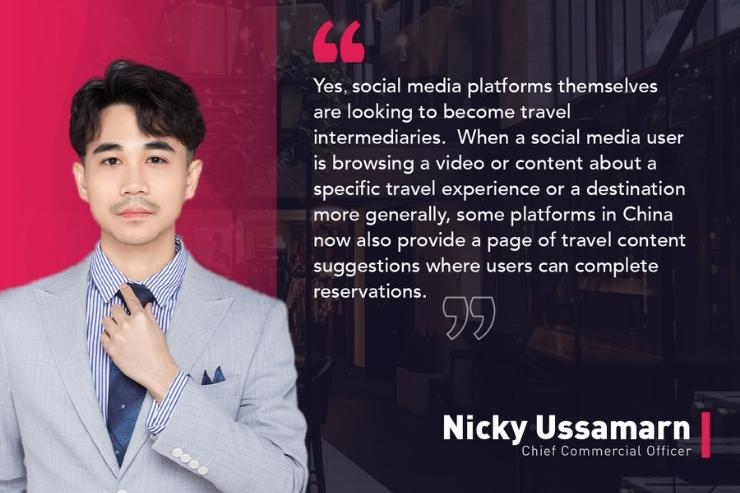
The nature of competition in China’s travel landscape is changing
The Chinese travel economy has grown exponentially over the last few decades, can this continue?
- The Chinese travel economy will continue to grow strongly, but as we mature clearly not as fast and certainly it will now begin to evolve in a very different way.
What will be different in this new environment then?
- Competition will be very different. The travel industry in China is a relatively new sector and as such travel brands were until recently focused solely on massive growth – capturing first time travellers in the hope of gaining their loyalty for life. To some extent, these brands weren’t even competing with each other, there were just so many opportunities.
What has driven this?
- Two things have happened. Firstly China has now become a much more mature market, meaning that there aren’t so many more new customers to be won – or at least not at the same rapid pace. And secondly COVID has basically killed off most of those companies that weren’t making an underlying profit and were living from endless funding rounds.
Can you give us some examples of how this might work?
- Previously travel businesses competed on price, sometimes even offering not just heavy discounts but services and products that were losing them money. This will now end. Instead travel brands will compete on multiple factors, such as the quality of their service, the range of products available, their technology, customer loyalty and branding, and so on. In effect, becoming a little more like the Western travel market has always been.
Social media as a sales channel Social media is clearly very successful in branding a travel product or destination, and often works well for customer services too, but how can it be an actual sales point?
- This is not an entirely new concept, affiliate marketing programs have beenrewarding social media influencers for some time when a post about their product or service leads to a booking. But now the actual platforms themselves are getting in on the act too and are looking to become travel intermediaries.
How exactly does a social media channel become a travel intermediary?
- When a social media user is browsing a video or content about a specific travel experience or a destination more generally, the platform provides a page of travel content suggestions where users can complete reservations. Essentially it is a location-based service. This is selling travel, but not in the way current online travel agents do so.
Are you involved in providing this service?
- Yes. We are already partnering with one of China’s leading social media platforms to offer them a dynamic inventory data interface – and speaking with many others around the world about this capacity.
What type of traveller makes a travel booking via a social media platform?
- This is very much a generation Z audience, or those born between 1995 and 2009. As we all know, they are heavily influenced by what they see and read on social media – and more importantly, they aren’t influenced by traditional media and see purchasing via social media as the norm. That means that if you want to reach them, and for them to purchase your services, this is now basically the only way to do it.
Generation Z are maximum 25 years old and some are as young as 12. Should Western travel brands really be prioritizing such travellers?
- In the West such an audience is perhaps not considered to be wealthy enough or a decision maker, but in China that is not the case. There are many people in their early 20s who have the money and desire to spend significant amounts on luxury travel experiences. Those at the younger end of the Generation Z scale perhaps aren’t quite there yet, but if you want to build future loyal customers this a good place to start – there are roughly 250m Chinese people below the age of 15 years old right now and the economy is growing more quickly than in the West.
James Jin, Chief Technology Officer
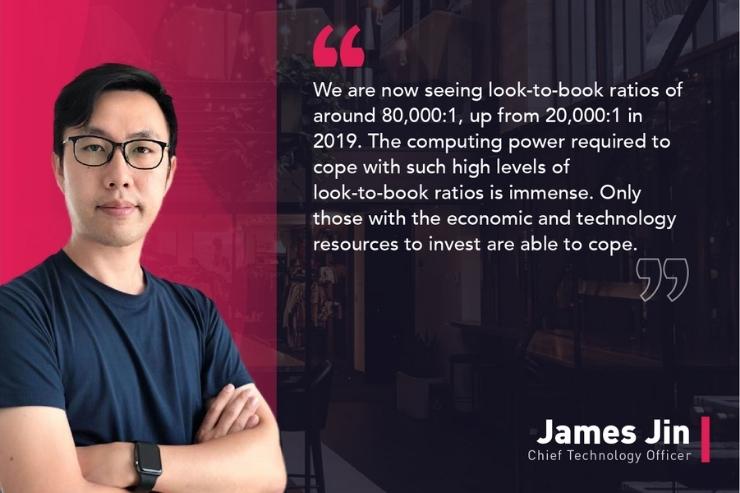
Look-to-book ratios increasing exponentially
How has the look-to-book ratio in the B2B hotel distribution space evolved during COVID?
- There has been a trend for the look-to-book ratio to increase steadily year-on-year over the last decade, but since COVID this has now accelerated even more. In fact we are now seeing look-to-book ratios of around 80,000:1, up from 20,000:1 in 2019.
What is driving this?
- In short COVID has resulted in people spending more time looking and less time booking: between making multiple reservations for fear of restrictions or just simply searching for inspiration, the net bookings ratio has fallen a lot. Plus as suppliers fight harder to get a booking, they place themselves on more channels meaning an even greater product range to search from.
Is this just China or a global phenomenon?
- This is very much a global phenomenon and we’re not seeing much difference in the data between China and the West.
What does this mean for the hotel distribution industry?
- The computing power required to cope with such high levels of look-to-book ratios is immense. Only those with the economic and technology resources to invest are able to cope and this will become more and more of a problem for those who can’t keep up. It also means that the hoteliers themselves are more dependent upon external support, as handling such demands in-house is not economical and frankly a distraction.
What kind of level of look-to-book ratio can DidaTravel handle?
- Many distributors won’t allow the look-to-book ratio to go beyond the 1 in 50,000 point, but at DidaTravel we are handle a ratio of up to 1 in 500,000. In a world of billions of hotel searches hourly, being able to handle a high ratio like that can make a huge difference to net bookings for a hotel – gaining revenues where others are missing out.
Greater need for distributed data response in hotel distribution
What is a distributed data response?
- By this I mean when a company has several end points around the world so that when someone makes a data request via a search, they are served by the nearest geographic location.
Why is that important in the global travel distribution eco-system?
- Response times are key to capturing a booking. Lots of evidence shows that if a page takes longer than a second to load people click away.
But that has been the case for years, what is driving the need for more distributed responsiveness right now?
- This is partly driven by the look-to-book ratio increase demand: more and more data is needed, quicker and quicker, and one way to improve that is by having local servers to reduces response times. But this need is also partly driven by the local regulatory and technical environments in different regions around the world that mean that only regional end points can really respond with the information needed in way that is both compliant and relevant.
- At DidaTravel we have invested heavily in having a distributed data response and now have end points in China in Hangzhou and Hong Kong, plus London and San Francisco.
Theodore is the Co-Founder and Managing Editor of TravelDailyNews Media Network; his responsibilities include business development and planning for TravelDailyNews long-term opportunities.





































































